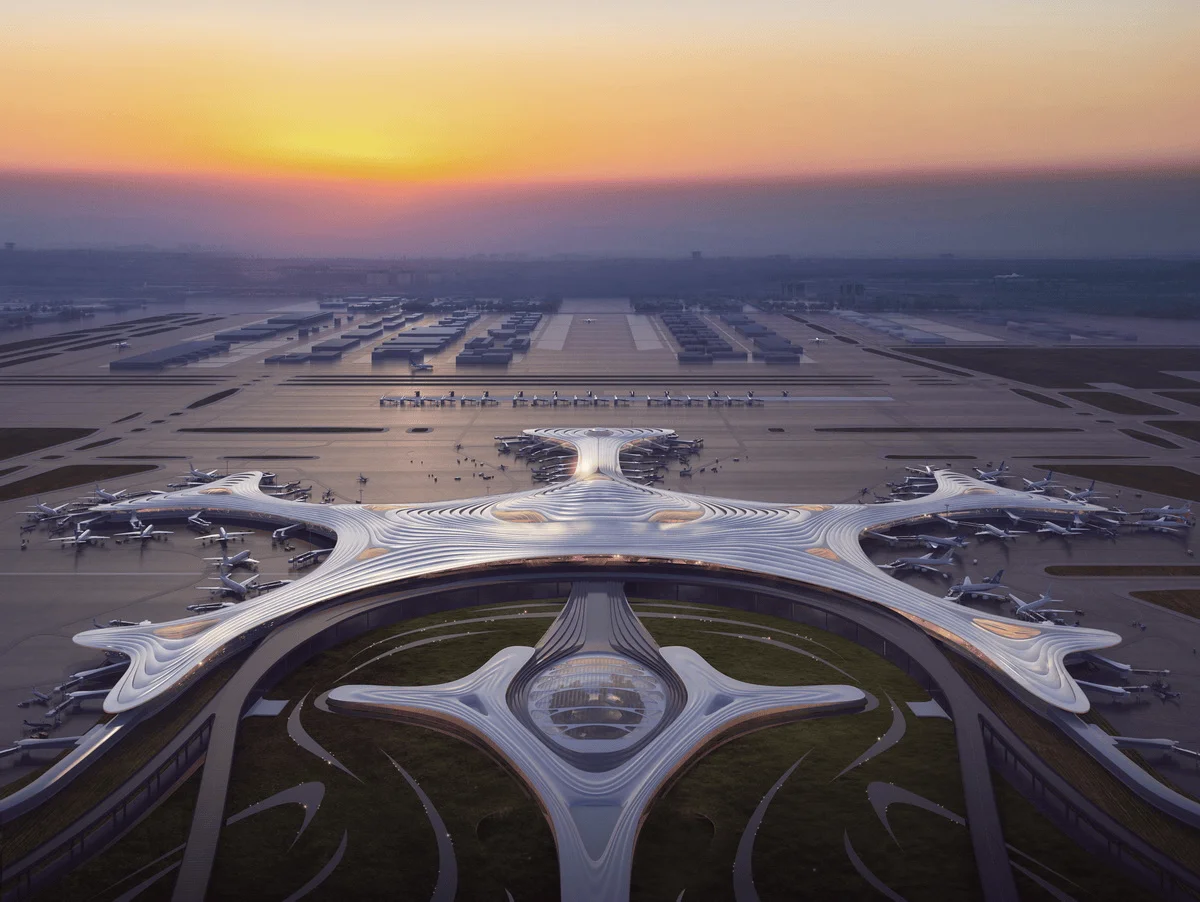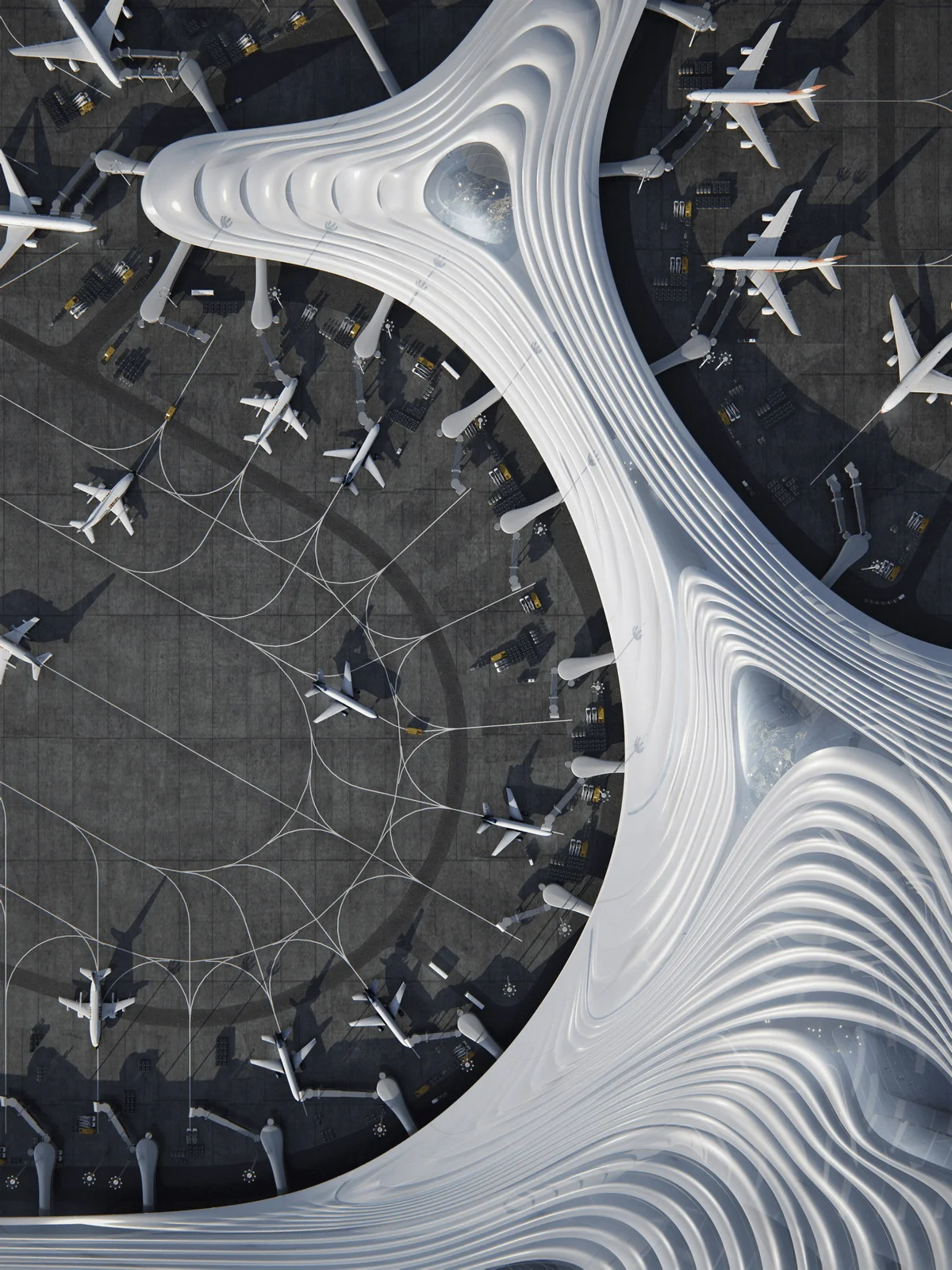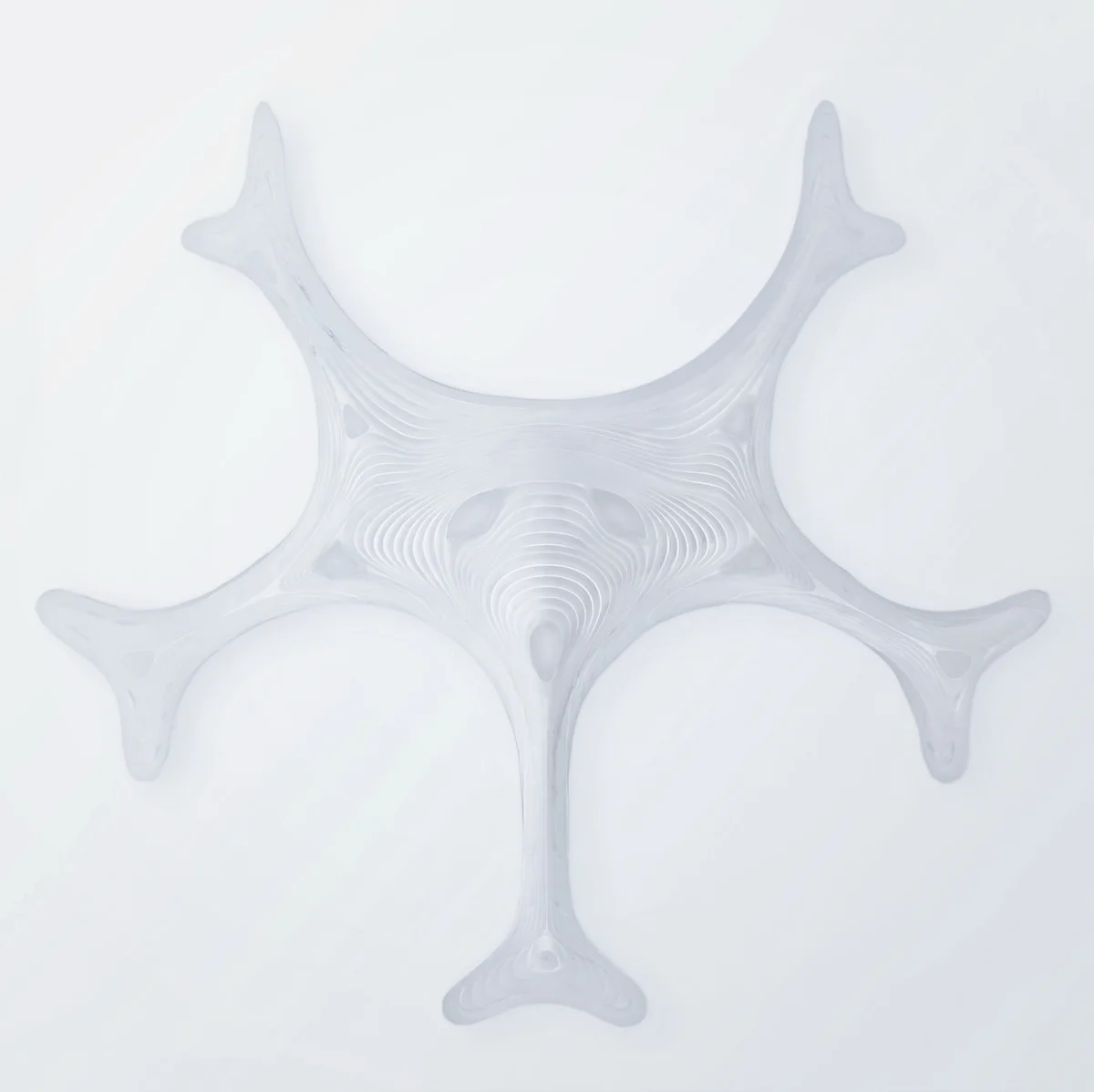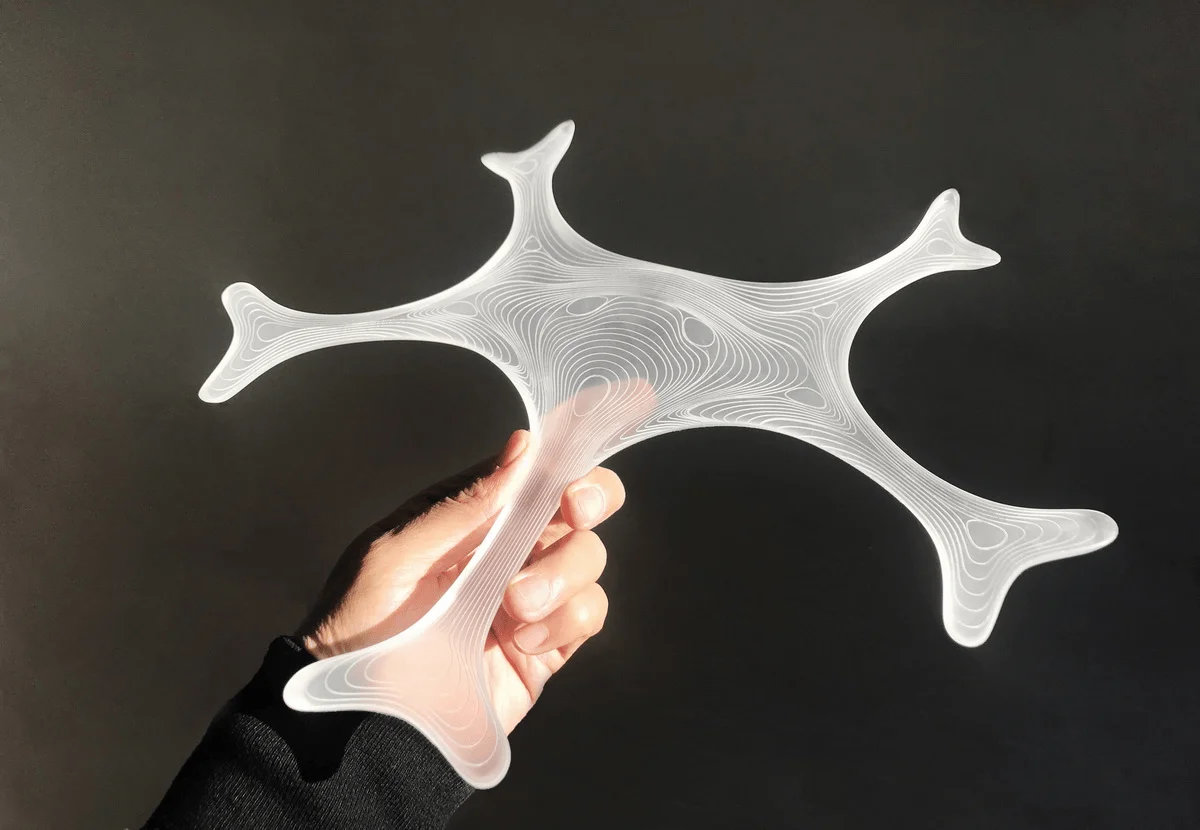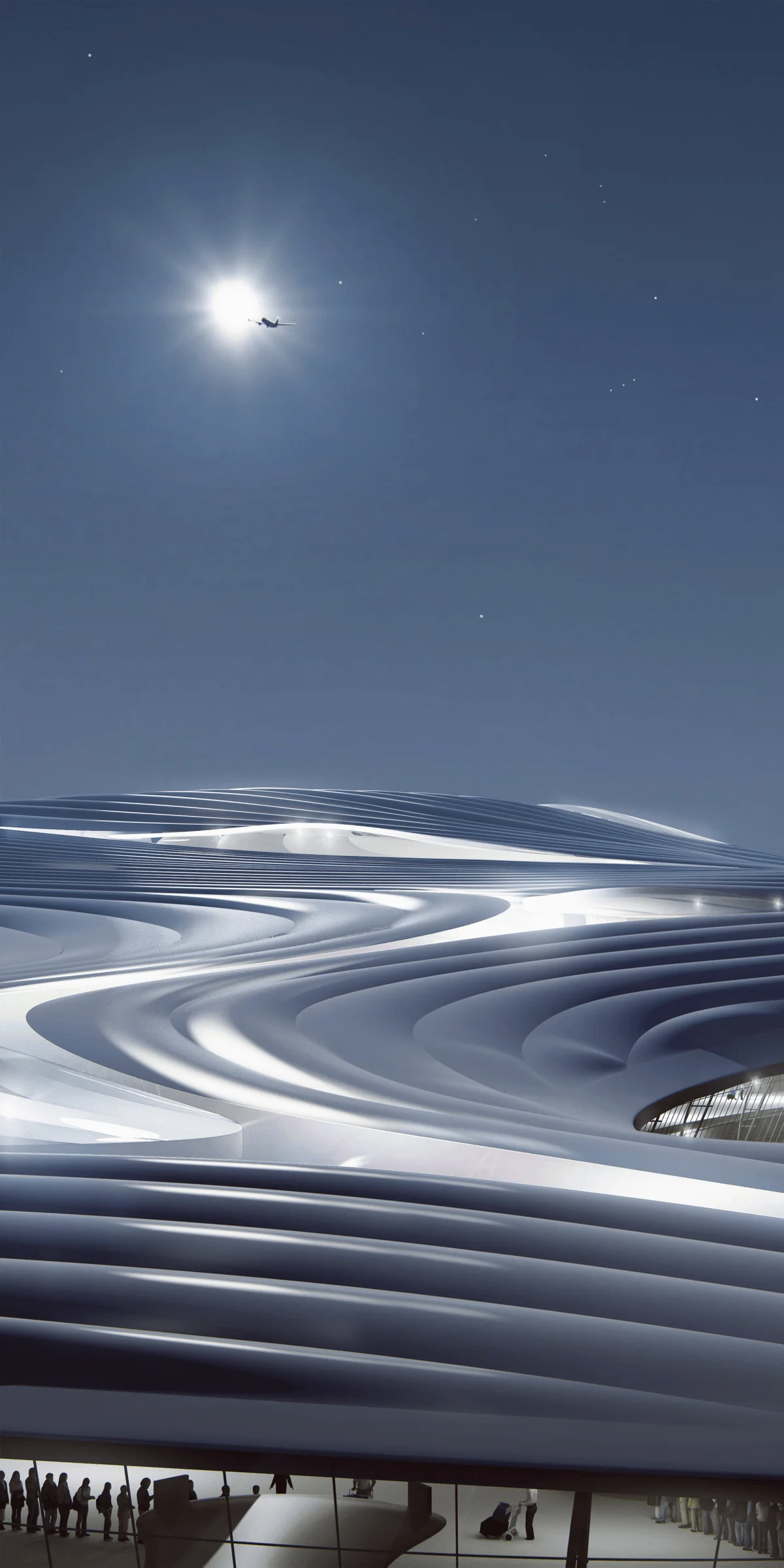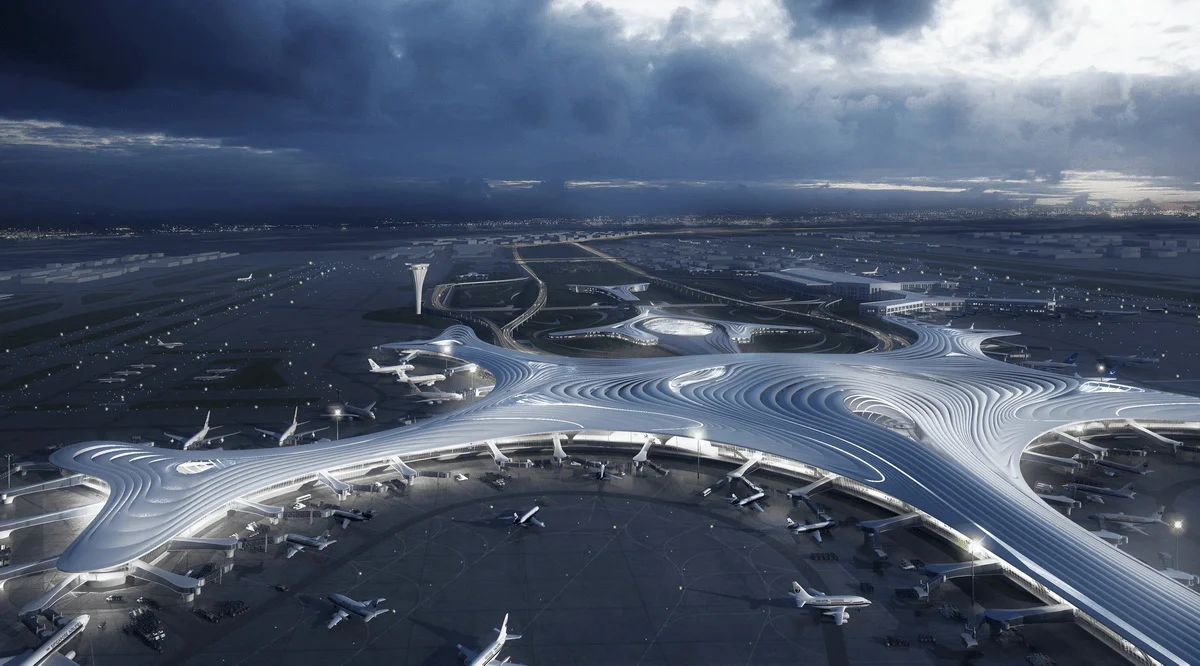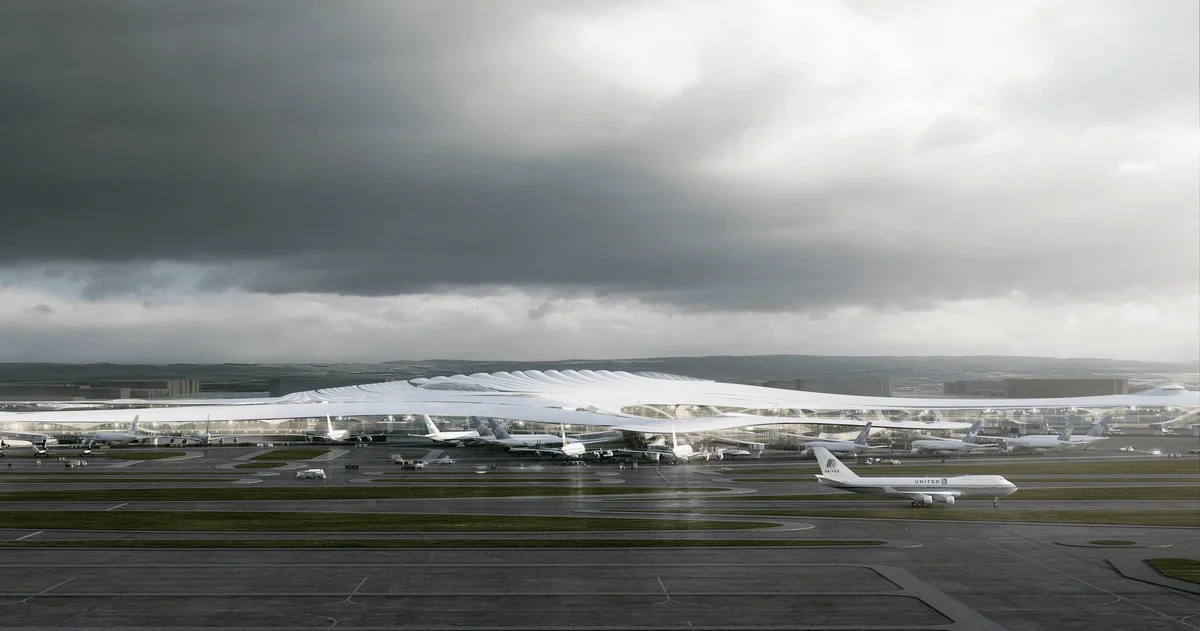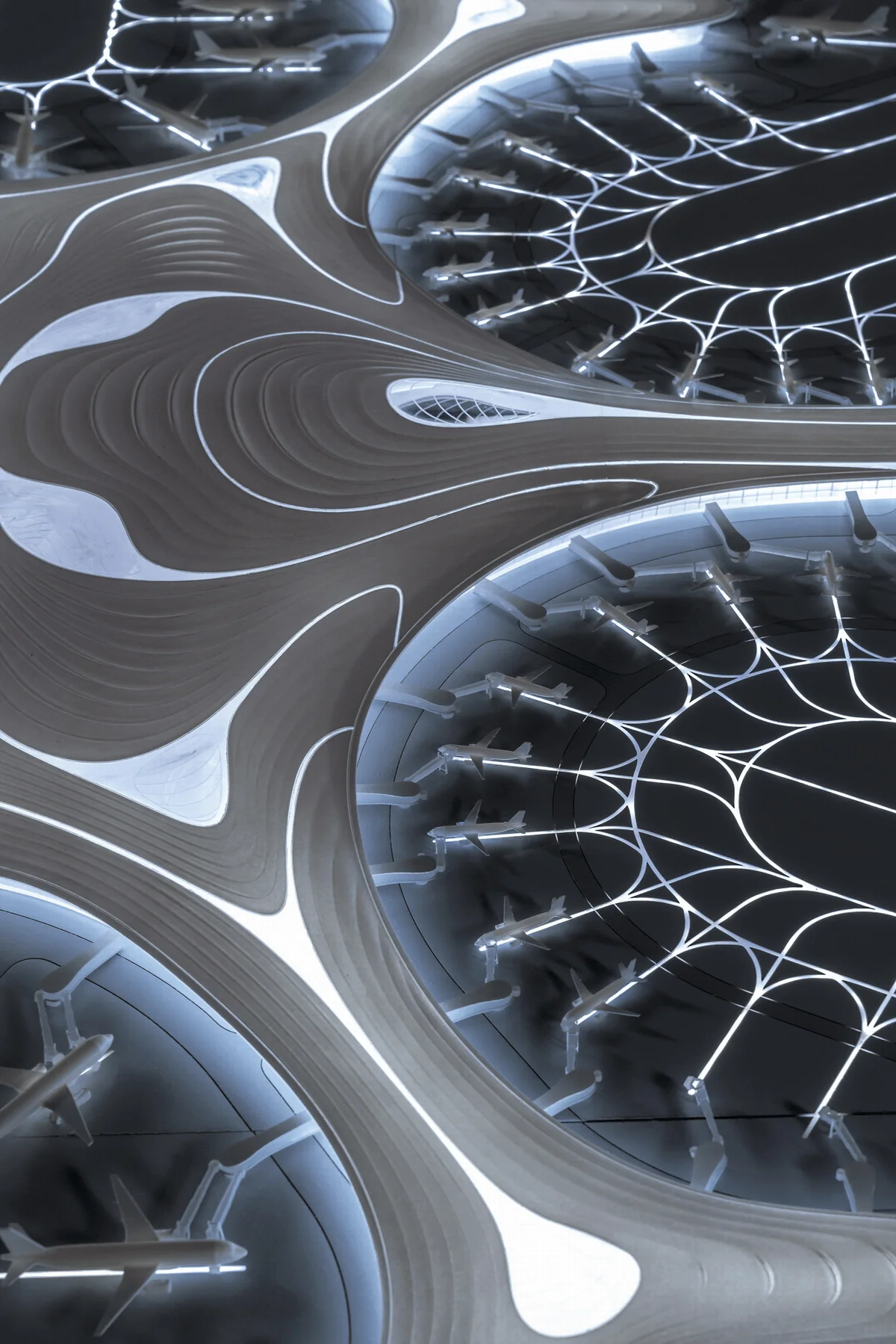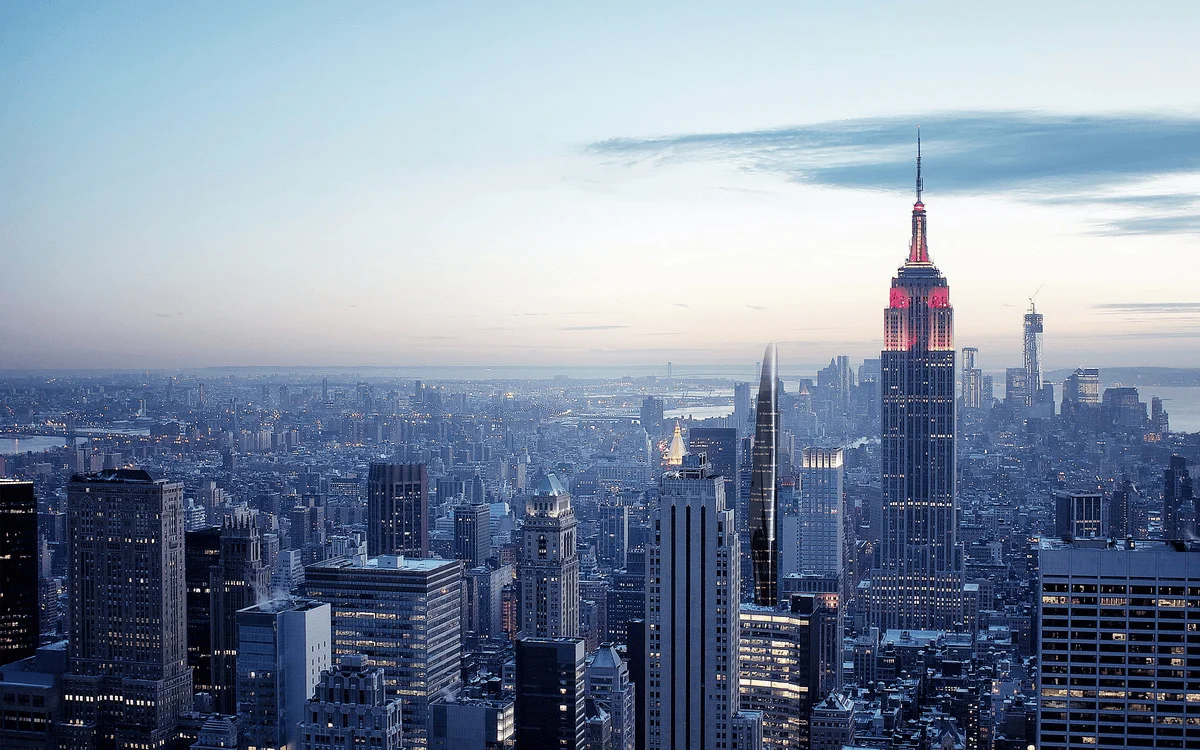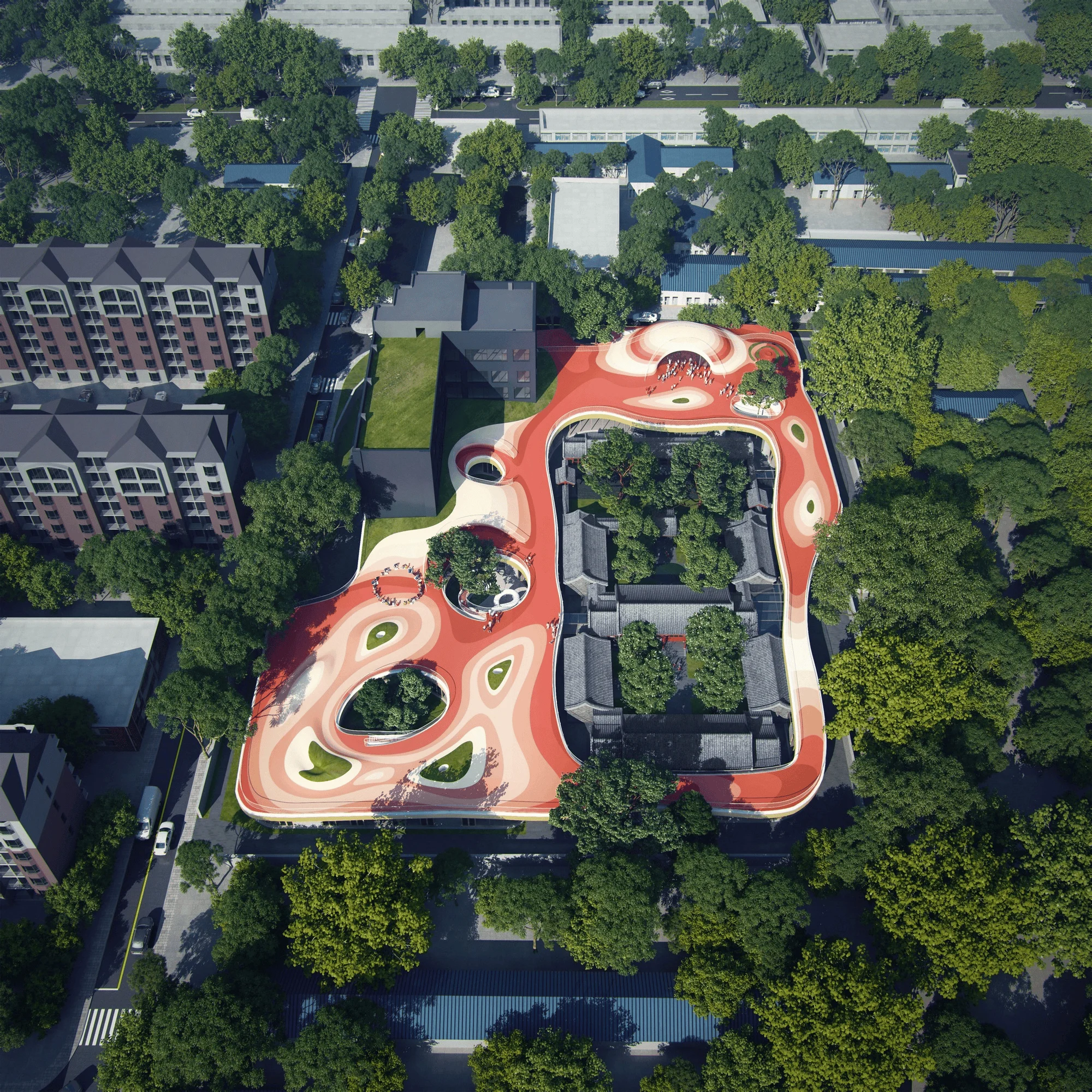MAD Architects, led by Ma Yansong, has unveiled the design scheme for the T3 terminal of Harbin Airport. Responding to the vast, undulating terrain and snowy landscape of northern China, MAD’s design for the T3 terminal resembles a snowflake delicately falling on the land of northeast China, sparkling and shimmering. It echoes the city’s identity as the ‘Ice City’ of Harbin. At the same time, it evokes a surreal interstellar space station, radiating a futuristic vibe. As the capital of Heilongjiang Province, Harbin holds a strategic position as the core of northeast Asia, radiating outwards to Europe and America. Located southwest of the existing T1 and T2 terminals, Harbin T3 terminal covers a total area of about 3,300 hectares, with a building area of approximately 920,000 square meters. It encompasses the terminal building, ground transportation hub, hotels, parking lots, and other ancillary airport facilities. MAD’s design avoids the drawbacks of traditional terminals that often suffer from excessive scale and inconvenience for users. It creates a welcoming atmosphere that is intimate, human-scaled, and ‘warm’, while also achieving green and energy-saving goals. The snowflake-shaped, five-fingered terminal features 89 close-to-the-aircraft gates, significantly reducing the time it takes for passengers to reach the boarding gates. The central hub’s multiple taxiways design effectively enhances aircraft gate utilization. Multiple gardens within the terminal serve as both indoor landscapes and friendly public spaces, acting as signposts guiding passengers to different areas. Glass skylights on top of the gardens bring natural light from outdoors into the interior, allowing passengers to experience the rhythm of nature even while indoors. This design also effectively reduces the use of artificial lighting. The Ground Transportation Center (GTC) integrates high-speed rail, city metro, and airport buses, connecting the city’s transportation network. Passengers can travel directly from the city to the terminal and hotels along the same axis, providing a premise for green commuting. The stepped garden layout within the GTC seamlessly blends landscape with different functional areas, offering a comfortable and relaxing leisure space for travelers. Upon completion, the T3 terminal will significantly enhance Harbin Airport’s passenger and cargo handling capacity. By 2030, the T3 will handle 43 million passengers annually, with approximately 320,000 aircraft movements, making Harbin Airport a truly world-class international hub airport.
Project Information:



